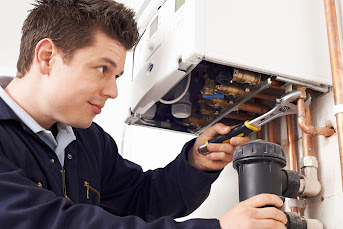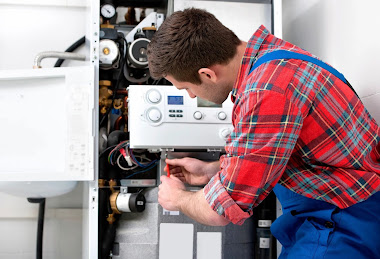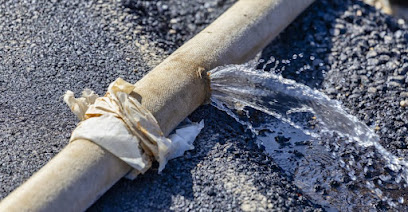9 steps for a speedy water heater repair process
A water heater can be an expensive appliance to repair. But if you follow these 9 steps, it will make the process go faster and smoother.
Step 1: Shut Off The Water Supply
The first thing you want to do before doing any work on your water heater is shutting off the cold-water supply that connects to it. If you don't know where the shut-off is, now's a good time to find it.
Step 2: Turn Off The Power
Then, you want to turn off the power. It doesn't matter if you have gas or electric water heaters, both need their power turned off. This can be done very easily by going down into your electrical box and finding the breaker that controls your water heater. You'll have to flip it off, or pull it out depending on what type of breaker box you have.
If you don't know how to find your electrical box, this is something you should learn before trying to fix your water heater because where the safety switches are will be different for every home. Your city's local building department should be able to tell you where or at least direct you in the right direction, though!
Step 3: Drain The Water Heater
Once your power is off and the cold-water shutoff is open, it's time to drain the water heater. This can be done by locating the drain valve at the bottom of your water heater or by turning on the shower closest to it for a few minutes.
Step 4: Disconnect The Electric
Next, disconnect the electric. This is usually simple enough, but can be complicated depending on whether you have gas or electric heaters. For gas heaters, all you need to do is find the right circuit breaker and turn it off. For electric heaters, you'll need to find the breakers that supply power to your unit. If there's more than one, turn them all off!
Step 5: Disconnect The Gas
On gas water heaters, you'll want to also disconnect your gas supply. This is done by unscrewing the gas line from your water heater.
Step 6: Remove The Electrical Cover
This might be a little confusing, since the electrical cover comes out and not up, but it's still pretty simple. You just need to unscrew the screws that hold it in place and then slide it off the wires going into your unit.
Step 7: Remove The Gas Line
Finally, the gas line needs to be removed. You can do this by unscrewing it from your water heater or by cutting it with a dremel tool. Be very careful not to drop any sparks during this step!
Step 8: Remove The Water Heater
Now that all electrical wires are disconnected, the gas line is removed, and the electric cover is off, you can simply remove your water heater. You should be able to move it around by yourself if the weight isn't too heavy for you.
Step 9: Reassemble Your Water Heater
Once you've gotten all of your pieces out, it's time to put them back together! Just reverse how you took them off, put in your new water heater if you have one, and turn everything back on.
If this process seems too difficult for you to do, call a plumber for professional help.
There are several steps that can be taken before calling a professional plumber for help. First check the power supply. Is the water heater not getting any power at all? If that is the case then it should be fairly easy to see what could be wrong. Sometimes a circuit breaker needs to be reset or a fuse blown if your wiring goes through a fusible link.
Next check to see if you have any pilot lights on your water heater. Are they lit or is your water heater not lighting? If you have the pilot lit and the power is on then there could be a problem with either your thermostat or thermonuclear. The most likely culprit in most cases though would be the heating element. It has caused most of my problems when they go out or fail to heat up.
If all else fails and you have ruled out a problem with your power or pilot then give a professional plumber a call.
It is important to note that if the water heater has been leaking, shut off the water supply before checking anything else! Once it has been shut off, check for any visible signs of a leak that would be causing rust damage or corrosion. If these do not appear, then you can safely assume that the leak is somewhere downstream of the shut off valve where you cannot see it and will need to crawl underneath your home or look in your crawlspace to find it.
If there is no evidence of a leak and you still cannot determine what could be causing damage inside your water heater it is most likely that you need to replace it. This will require further inspection under the home with a plumber to find the source of the leak and repair it.
If you have ruled out all other possibilities for problems on your water heater, call a professional who can inspect more thoroughly if necessary before replacing your water heater.
Conclusion: We hope these 9 steps will help you navigate the process of repairing your water heater with ease. Once again, we would like to thank our readers for taking time out of their day to read this blog post and learn about how they can repair a water heater in an efficient manner. Thank you!
Author Bio:- Karl Brown
Karl, a marketing manager at EZ Leak Detection, loves to write about plumbing and HVAC services to make the life of the reader easier. Leakages in your property can be dangerous but not all the leaks are easily accessible. He has given extensive information about water leak and slab leak and tips to detect them quickly along with quick solutions to prevent you from inconveniences and health hazards.
Leakage problems and malfunction of appliances demand comprehensive solutions. Also, regular maintenance is not the thing to be missed for leading life with zero hassles. Read our recent post related to leakage detection and repair, alerts for HVAC shutdown and how to repair it, and installation of AC and water heater in San Diego.





Comments
Post a Comment